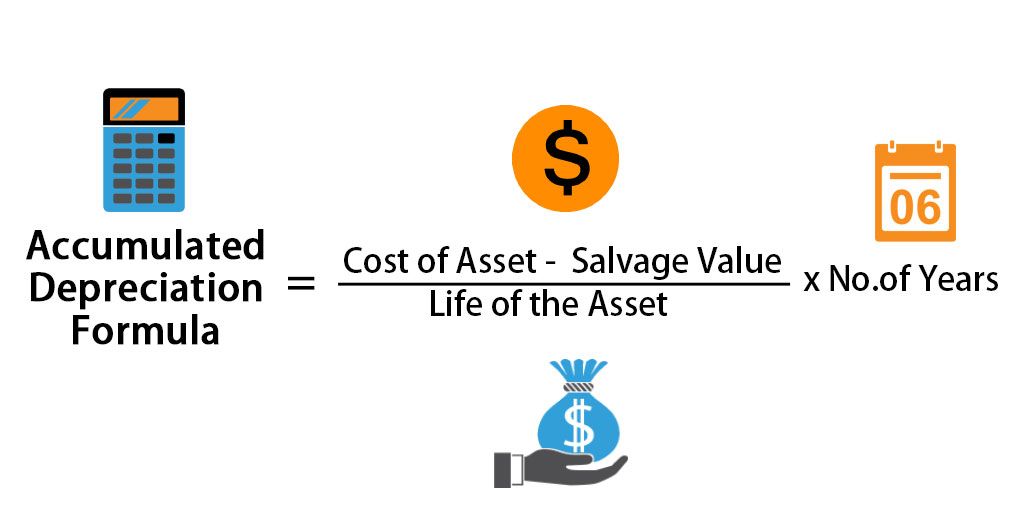Accumulated depreciation is a key concept in accounting and finance. It represents the cumulative depreciation of an asset up to a specific point in its life. Depreciation is the method of allocating the cost of a tangible asset over its useful life. Businesses depreciate long-term assets for both tax and accounting purposes. How to Calculate Accumulated Depreciation?
The process of calculating accumulated depreciation allows a company to provide an accurate picture of the asset’s value over time. In other words, it shows how much of the asset’s value has been used up.
To calculate accumulated depreciation, one typically uses the straight-line method, although other methods such as the declining balance method or the units of production method exist. The calculation generally involves knowing the cost of the asset, its salvage value, its estimated useful life, and the length of time the asset has been in service.
In the following sections, we will explain how to calculate accumulated depreciation using the straight-line method, one of the most straightforward and commonly used methods.
1. Definition of Accumulated Depreciation
Accumulated depreciation is an accounting term that refers to the aggregate depreciation of a physical or non-physical asset from the time it was put into use. Essentially, it’s the total depreciation that an asset has undergone over its service life.
In simpler terms, when a company purchases an asset, such as equipment, that asset will lose value over time due to factors such as wear and tear, obsolescence, or market changes. This loss of value over time is known as depreciation. Accumulated depreciation is the total amount of this depreciation that has been recorded since the asset was put into service.
It’s important to note that accumulated depreciation is a contra asset account, meaning it is shown as a deduction from the asset’s original cost on the balance sheet. This gives a more accurate picture of the asset’s book value, or what the asset is currently worth to the business.
While accumulated depreciation does not directly affect a company’s cash flow, it plays a key role in tax deductions as it reduces the company’s taxable income over the asset’s useful life. Moreover, it provides valuable information to investors and creditors about how much of the company’s asset base is being used up and might need to be replaced in the future.
2. How to Calculate Accumulated Depreciation?
Accumulated depreciation is the total depreciation of a physical or non-physical asset that a company has recorded. It is calculated over the asset’s useful life.

The formula for calculating accumulated depreciation using the straight-line method is:
Accumulated Depreciation = (Cost of Asset - Salvage Value) / Useful Life * Number of YearsHere is how to apply this formula:
- Cost of Asset: This is the initial purchase cost of the asset.
- Salvage Value: This is the estimated value of the asset at the end of its useful life.
- Useful Life: This is the estimated time period that the asset is expected to be used in the business.
- Number of Years: This is the number of years that have passed since the asset was put into service.
For example, if a business bought a machine for $10,000, estimated its salvage value at the end of its 10-year useful life to be $2,000, and 3 years have passed since it was put into service, the accumulated depreciation would be:
Accumulated Depreciation = ($10,000 - $2,000) / 10 * 3
Accumulated Depreciation = $2,400So, the accumulated depreciation of the machine after 3 years is $2,400.
Please note that different methods of depreciation (like reducing balance method or units of production method) will have different ways of calculating accumulated depreciation. The example above used the straight-line method, which is one of the most straightforward and commonly used methods.
3. Example of Python Code Leveraging Accumulated Depreciation
Here’s a simple Python code example that calculates accumulated depreciation using the straight-line method:
def accumulated_depreciation(cost, salvage, life, years):
"""
This function calculates accumulated depreciation of an asset.
Parameters:
cost (float): The initial cost of the asset.
salvage (float): The estimated salvage value of the asset at the end of its useful life.
life (int): The estimated useful life of the asset.
years (int): The number of years the asset has been in service.
Returns:
float: The accumulated depreciation of the asset.
"""
return (cost - salvage) / life * years
# Test the function with a sample asset.
cost = 10000
salvage = 2000
life = 10
years = 3
print("Accumulated depreciation: $", accumulated_depreciation(cost, salvage, life, years))Conclusion
In conclusion, understanding and calculating accumulated depreciation is crucial for any business. It not only allows a company to track the diminishing value of its assets over time but also helps in portraying an accurate financial picture of the business. This understanding aids in making informed decisions regarding asset replacement, budgeting, and tax planning.
The process to calculate accumulated depreciation is relatively straightforward, especially when using the straight-line method. The key variables to consider are the initial cost of the asset, its estimated salvage value, the asset’s useful life, and the number of years the asset has been in service.
Moreover, with the help of programming languages like Python, we can automate the calculation process, making it even easier to track and manage accumulated depreciation over the lifespan of multiple assets.
Remember that while accumulated depreciation provides valuable insights into asset usage, it is only one piece of the puzzle. For a comprehensive understanding of a company’s financial health, it should be considered in the context of other financial metrics and indicators.
